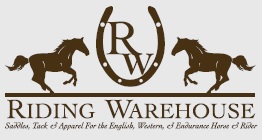 In my last post I wrote about boots for stall rest and light turnout. There are boots out there intended for riding and turnout. I looked at the Easy-boot Epic, Boa, Cavallo, and Old Mac boots side by side at Horseman's Outlet, and I read about the Renegade and other boots.
In my last post I wrote about boots for stall rest and light turnout. There are boots out there intended for riding and turnout. I looked at the Easy-boot Epic, Boa, Cavallo, and Old Mac boots side by side at Horseman's Outlet, and I read about the Renegade and other boots.
Confession time!
Without doing a ton of homework, I bought the Cavallo Simple boots based on their low cost ($115) and uncomplicated design. The other boots didn't appear as easy to use (a problem when barn workers have to apply and remove), they cost more (range $130-$159), and they were more complicated to get a proper fit. I like the Cavallo boot just fine, and Riley "took to them" easily. Now here are some notes on the other boots, based on personal observation and postings on bulletin boards...
Some general points
- They vary in their design -- some are more oval shaped, and some are round. You just won't be happy with a boot that is not in the correct basic shape, and if you buy an oval boot for your round-footed horse he'll be more prone to tripping
- They have to fit properly to be safe! Experts say that most people buy them a size too big.
- Most come above the coronet band, which protects from grit but also may cause rubbing.To combat rubs, most boots now come with "gaitors" or you can purchase them separately. They're like socks.
- If you're thinking of wearing them in competition, check with the organization that makes the rules to make sure they're legal. In dressage, these boots are considered to be like leg coverings, which are not allowed.
Old Mac (OM) boots ($169ish)
These come in two types, or generations. The G1s are rounder, intended for a hoof as wide as it is long. The G2s are pointier, for an oval hoof. The Old Macs buckle over-strap that many owners describe as "difficult," and one COTH member recommended using pliers for the strap. Many OM boot owners that described them as clunky, cumbersome and difficult to get on and off. One COTH member hadto use pliers to buckle them. Even so, a large number of posters cited these boots as their favorites. Read a
review of Old Macs from the Nuzzlingmuzzles blog.
Easyboot ($150-$170ish; can be bought in singles)
Easycare, Inc. makes a lot of boots, including Old Macs and Boa boots. There are many types of Easyboots, carefully and candidly described on the Web site (e.g., The Edge model "will not fit a horse with wide feet"). There is a style with an "aggressive tread" for example. Easyboots have come a long way since I bought my first one in 1998 -- actually I ended up cutting it off Harvey! Their customer service has received praise and they have quite a following in the edurance community. They have styles that fit below the hairline, eliminating rubs. I've read that they must fit perfectly to work right -- a close fit -- and that they stay on well in all types of terrain. They are not designed to be worn with pads, are good for turnout, and are difficult to get on and off. The older designs have metal pieces that could break if they hit a fence, so they may not be suitable for jumping. Finally, horses that forge may tear the gaitor off (it is replaceable). To learn more about each Easycare boot go to
New to hoof boots? or read a
review of the Easyboot Glove from a cutting horse owner.
Hoof wings ($170 to over $200)
While these boots are less well-known, they have a strong following and are one of the only boots to offer a true custom-tailored boot (the other is Renegade). Designed to be used for riding and turnout, they come in many colors and can be produced for very large feet. They are reportedly easy to put on and take off. See the product review from
NC Horse News for more info...
Cavallo Simple boots ($119)
It's an incestous world! Cavallo used to make the Old Macs, but they sold the patent to EasyCare and moved on to the Simple Boot. These are best for a rounder foot. They're considered to be a great value, easy to get on and off, and they stay on well if they fit. The velcro suffers from the same problem as bellboots with velcro -- you must protect the velcro "stickiness." One owner mentioned they require a breakin period.
Boa boots ($150ish)
The Boa boots have their fans, and they are simple to use, but the word on the street is that they have issues. They use tension wires which you can loosen or tighten with a dial -- but one owenr complained the dial makes an impression on the hoof. Others say that the wires start to loosen on their own over time, the fasteners break, and there is one part that detaches and it can pop off mid-ride. Riley fusses with his boots, and I'm certain he could pull it off with his teeth. Some Boa boot owners report they need to trim their horse every three weeks to maintain a good fit. Other posters complain that the boots twist on the foot.
Renegade bootsThese used to be available only through a farrier. They seem to be quite popular -- easy to put on, great colors, a below the hoofline (no rubbing), lighter and more flexible than Easycare boots, durable for endurance riders. One poster on COTH did lament that they do not come in larger sizes (Web site sizing tops out at 5 1/2" wide and long). Here's a
review from Gopony.blogspot.com
Sabresneaker ($100ish each)
These are kept behind the counter at Horseman's Outlet -- not sure why except that they're sold in singles and are a tad pricier than most. Or, perhaps it's just that they're often special-ordered. They are definitely for a round-soled horse. My friend has one that is going strong after a lot of pasture turnout -- not just her horse but other boarder's horses (she's the generous type). One owner said that there is no tread on the sole, and they're slippery on wet grass. I doubt it is intended for turnout.
Marquis hoofwear ($300ish)
These boots use air bladders or chambers that can be pumped to improve fit, and there are replaceable parts available if something breaks. They're the priciest in this review. Certainly some people report they like them, while others have commented they "have a nice fit but are relatively heavy." From the comments generally I gather they were one of the early models that have gotten pushed out of contention by an ever-growing array of boot choices.
A nifty tip for the budget-consciousWanna find a used boot? Check out the
Boot swap page where you can buy or trade used boots, courtesy of naturalhorsetrim.com
My .02I'm not conservative about spending, but I
am conservative on safety issues. Any of the boots on the market are potentially unsafe if the fit is less than perfect. Let's face it, the boots are unwieldy looking, bulky, and stiff. Imagine your horse gets one half-way off and then is compelled to run around. Here is a quote from a COTH poster: "Old Macs turned on his feet and the strap that keeps them on necrosed part of his pastern skin, and the crank button on the Boa boots dug into his coronet band and caused a ripple in his hoof growth after just being on for about 6 hours." Unless your horse is pretty quiet, and unless the fit is absolutely perfect, I would probably worry too much about using them for riding or unsupervised outside time.
So, after spending all that money, I've decided that Riley can wear his Cavallos in his stall. They'll keep his feet clean, hold bandages and meds, and they'll last forever. I don't care if they're over-engineered for their purpose!
GENERAL RESOURCES ON HOOF BOOTSHoof boots hit the trail from Myhorse.com
Hoof boots: The sound alternative to conventional shoes from High Performance Hoof Care
Hoof boot reviews from, well, some individual
Hoof boots from All-natural-horse-care.com
Barefoot boots from Valley Vet Supply
Hoof boots: Protection without permanence from The Horse magazine
Hoof boots and
Brands of hoof boots from bellaonline.com
Hoofwings by horsneakers (custom fit horse boots)
Hoof boots from All-natural-horse-care
Hoof boots for riding from the
Horse JournalChanges afoot a pdf document from Tag 'n Togs Merchandising (May 2007)
These boots are made for walkin' and a whole lot more! (pdf file, discussion of boots aimed at farriers)































